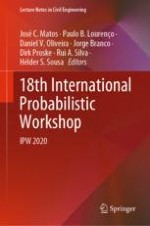2021 | OriginalPaper | Chapter
Location Dependency on Resilience and Material Intensity of an Office Building Keeping an Eye on Seismic Zone Implications
Authors : Regine Ortlepp, Mahar A. Gul
Published in: 18th International Probabilistic Workshop
Publisher: Springer International Publishing
Activate our intelligent search to find suitable subject content or patents.
Select sections of text to find matching patents with Artificial Intelligence. powered by
Select sections of text to find additional relevant content using AI-assisted search. powered by
